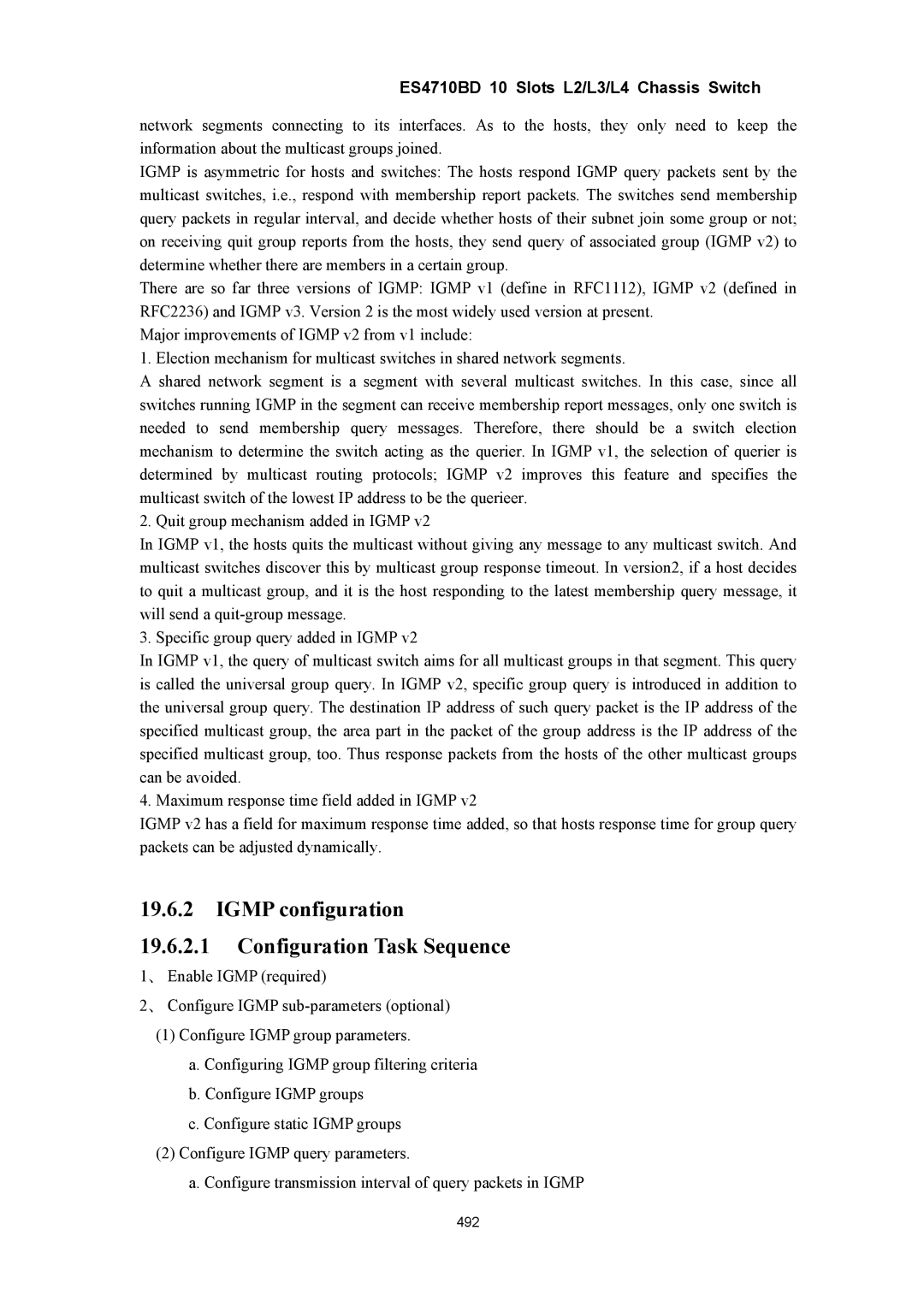ES4710BD 10 Slots L2/L3/L4 Chassis Switch
network segments connecting to its interfaces. As to the hosts, they only need to keep the information about the multicast groups joined.
IGMP is asymmetric for hosts and switches: The hosts respond IGMP query packets sent by the multicast switches, i.e., respond with membership report packets. The switches send membership query packets in regular interval, and decide whether hosts of their subnet join some group or not; on receiving quit group reports from the hosts, they send query of associated group (IGMP v2) to determine whether there are members in a certain group.
There are so far three versions of IGMP: IGMP v1 (define in RFC1112), IGMP v2 (defined in RFC2236) and IGMP v3. Version 2 is the most widely used version at present.
Major improvements of IGMP v2 from v1 include:
1. Election mechanism for multicast switches in shared network segments.
A shared network segment is a segment with several multicast switches. In this case, since all switches running IGMP in the segment can receive membership report messages, only one switch is needed to send membership query messages. Therefore, there should be a switch election mechanism to determine the switch acting as the querier. In IGMP v1, the selection of querier is determined by multicast routing protocols; IGMP v2 improves this feature and specifies the multicast switch of the lowest IP address to be the querieer.
2. Quit group mechanism added in IGMP v2
In IGMP v1, the hosts quits the multicast without giving any message to any multicast switch. And multicast switches discover this by multicast group response timeout. In version2, if a host decides to quit a multicast group, and it is the host responding to the latest membership query message, it will send a
3. Specific group query added in IGMP v2
In IGMP v1, the query of multicast switch aims for all multicast groups in that segment. This query is called the universal group query. In IGMP v2, specific group query is introduced in addition to the universal group query. The destination IP address of such query packet is the IP address of the specified multicast group, the area part in the packet of the group address is the IP address of the specified multicast group, too. Thus response packets from the hosts of the other multicast groups can be avoided.
4. Maximum response time field added in IGMP v2
IGMP v2 has a field for maximum response time added, so that hosts response time for group query packets can be adjusted dynamically.
19.6.2IGMP configuration
19.6.2.1Configuration Task Sequence
1、 Enable IGMP (required)
2、 Configure IGMP
(1)Configure IGMP group parameters.
a.Configuring IGMP group filtering criteria
b.Configure IGMP groups
c.Configure static IGMP groups
(2)Configure IGMP query parameters.
a.Configure transmission interval of query packets in IGMP
492
